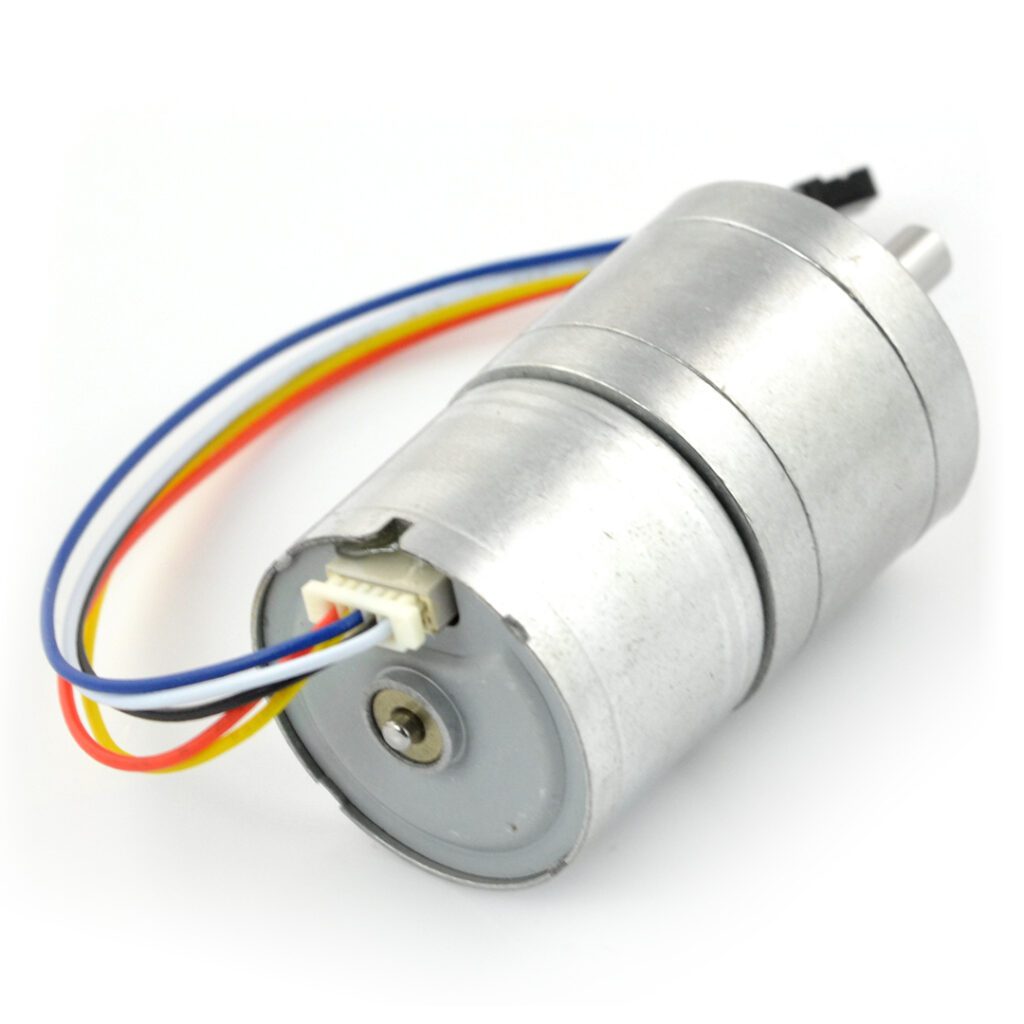Table of Contents:
Brushless dc motors (BLDC – brushless dc motors) have revolutionized many areas of industry, electronics and automobiles.
BLDC – brushless DC motors) have revolutionized many areas of industry, consumer electronics and automotive.
They are widely used in many fields contributing to innovation and development of new technologies.
They require a controller to operate.
Brushless motors - construction and operation
Brushless motors (BLDC) differ from traditional direct current (DC) motors primarily by the absence of brushes and commutator. This allows for greater efficiency, reliability and reduced wear and tear. The rotor of a brushless motor is magnetically mounted on the motor shaft and usually consists of permanent magnets (usually neodymium).
These magnets generate a magnetic field that is used to induce motion in the stator coils.
Another component, the stator of a brushless motor, contains coils that are usually arranged symmetrically around the rotor.
These coils are sometimes called phases and generate a magnetic field that interacts with the magnets on the rotor, and this causes the rotor to rotate. Some brushless motors use position sensors to determine the position of the rotor relative to the stator. This allows the controller to accurately control the current in each phase and provide the correct torque for smooth operation.
The brushless motor controller, which we will deal with in today’s article, on the other hand, is responsible for regulating the current in the stator coils at the right time and in the right direction to induce rotational movement of the rotor. The controller receives signals from position sensors (or performs it without them, so-called sensorless control) and delivers the appropriate current to the coils. The question of communication remains, and here, too, a lot of leeway – brushless motors may require communication circuits such as UART, PWM or CAN interfaces to control and monitor motor operation.
We use these to control speed, direction of rotation, and to monitor temperature and current.
Brushless motor controllers
The BLDC (Brushless DC) motor controller plays a key role in ensuring smooth and controlled motor operation.
Its main task is to control the current in the motor coils at the right time and in the right direction to generate the desired rotor speed.
We already know that some configurations of BLDC motors use position sensors – this is known as a halotron, which monitors the position of the rotor relative to the stator.
Halotrons transmit information to the controller about the current position of the rotor, which is necessary to synchronize the generated magnetic field with the position of the magnets on the rotor.
The BLDC motor controller sequences the current in each phase of the motor in such a way as to generate RPM.
There are several common phase sequencing methods, such as the trapezoidal method (for controllers with position sensors) and the sinusoidal method (for controllers without position sensors).
The controller controls transistors or other semiconductor elements that energize the motor coils at the appropriate time and direction.
Depending on the sequence, the controller turns the appropriate transistors on and off to route current through the appropriate coils, which generates the appropriate torque and rotor direction.
It can also incorporate speed and torque control algorithms that monitor the speed and load of the motor, and then adjust the current control to maintain the desired speed or torque.
Use of brushless motors with controllers
Thanks to their high performance and energy efficiency, as well as the possibility of infinitely variable speed control brushless motors are an attractive choice for manufacturers of power tools – we’re talking about power tools such as drills, grinders and screwdrivers. Many outperforming household appliances such as washing machines, dryers, refrigerators and dishwashers use brushless motors with controllers to drive pumps, fans and other components, contributing to the energy efficiency and durability of these appliances.
They are also used by urban utility vehicles and high-speed transportation such as electric bicycles, hover skateboards, scooters and scooters. Combined with advanced BLDC motor controllers, they allow for smooth driving, fast acceleration and high speeds.
Another, slightly more specialized field of BLDC application is remote-controlled and RC vehicles such as drones, quadrocopters and robots, among which high performance, low power consumption and precise motion control are required.
And since BLDC motors allow for smooth control of speed and direction, which is crucial for stable and agile control of small devices, it’s no surprise that they are often found in hobby and professional robotics. Brushless motors can even be found in aerospace and medical devices such as insulin pumps, diagnostic imaging equipment and operating tables.
Custom projects with BLDC controllers
Once you know the basics, it doesn’t hurt to play around.
Working with brushless motor can be a great way to learn the basics of electronics, automation, microcontroller programming and the principles of electric motors.
It’s a great opportunity to gain practical knowledge and experience in the technology area.
At stake, for example, is the construction of a simple vehicle or robot that will use a brushless motor for propulsion and Arduino to control its movement. Or building your own machine CNC (Computer Numerical Control) for machining wood, plastic or aluminum that uses brushless motors to drive the axes and an Arduino platform to control the tool’s motion.
For the creative, it’s worth pointing in the direction of interactive art installations, exhibitions or toys that use brushless motors for animation and movement, and the Raspberry Pi platform for control and user interaction.
Ideas abound – take a look at Botland store and bet on the leading suppliers of electronic kits and modules that you’ll use for a variety of projects, including those using brushless motors.
How useful was this post?
Click on a star to rate it!
Average rating 0 / 5. Vote count: 0
No votes so far! Be the first to rate this post.





















